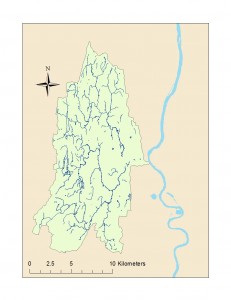Water quality and quantity is measurable in our bodies, rivers and built environments. We depend on this natural product to sustain us and keep communities flowing and regulated. Every being on this planet depends upon water. Yet, we still face challenges convincing our neighbors and peers to work together and give people the tools to make differences that improve our one and only shared natural earth.
In order to develop a successful watershed stewardship, we need to identify interested groups, such as schools, home owners, park friends & groups or. . . municipalities, etc., who live on or around the river. Many people don’t realize that their own back yard contributes to the health of a stream system. For example, lawn fertilizers or salt deposits washed from rainstorms can quickly build up in our reservoirs or drainage systems. The Park River Watershed can help orient these interested groups towards annual activities that improve water quality and gather information from groups, so as to aggregate site specific data.

Collected data can then be forwarded to state and federal environmental programs or organizations, government agencies as well as nonprofits that work on the larger water bodies such as Connecticut River Watershed Council, and Save the Sound, which is the long island sound coastal environmental nonprofit group.
Utilizing the GitHub tool, I was able to play around with the town boundary and watershed boundary lines. GitHub allows one to turn on or off the different types of polygon layers present. I also have divided the SmartChoices Schools into three different types of schools: Interdistrict, district, and Pre-K centers. You can learn more about what SmartChoices is here.
This interactive data visualization helps parents around the Hartford area to view specific schools they are interested in for their children. It my also be helpful for teachers or people interested in the educational system to help them discover these specific schools that are in or around the Park River Watershed. Please see this link to my map here.
Below are the descriptions and color identifications for each school:
Yellow/1) Water or wetland adjacency: school grounds are within walking distance of a river, brook, or pond. This increases opportunity for water quality monitoring, environmental research and stream stewardship.
Green/2) Environmental goals: School curriculum prioritizes natural sciences, which increases potential for local environmental research and stewardship.
Purple/3) A nature trail, park, or open space within walking distances indicates opportunities for classroom or extra curricula site specific. environmental activities.
Pink/4) Science goals could include topics such as medicine or technology that is not directly related to the environment.
Red/5) STEM schools are schools that concentrate on Science, Technology, Engineering , and Math.
Data is constantly changing especially when incorporating new and existing school information. But I hope this was a small step into teaching others about how important a watershed does affect us and our community. Thanks for checking my page out!